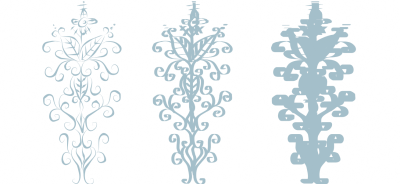Precision Unleashed: A Comprehensive Guide to Drawing Preset Lines in CorelDRAW

Introduction:
CorelDRAW, a renowned vector graphics editor, stands as a powerhouse for digital artists, designers, and illustrators. Among its array of features, the ability to draw preset lines is a fundamental skill that provides users with efficiency and precision. In this extensive guide, we will delve into the intricacies of drawing preset lines in CorelDRAW, exploring techniques, customization options, and advanced tips to empower you in creating visually polished and accurate designs. Whether you’re crafting technical drawings, diagrams, or detailed illustrations, mastering the art of drawing preset lines enhances the quality and precision of your digital artwork.
Understanding the Basics of Preset Lines:
Preset lines in CorelDRAW refer to predefined line styles that users can easily apply to their designs. These lines come with preset attributes such as thickness, color, and style, offering a quick and efficient way to add consistent and visually appealing lines to your creations. CorelDRAW provides a variety of preset line options, ranging from simple strokes to more complex artistic lines.
Basic Techniques for Drawing Preset Lines:
- Accessing the Preset Line Tool: To draw preset lines in CorelDRAW, select the ‘Preset Line Tool’ from the toolbar or access it through the ‘Tools’ menu. This tool provides a dropdown menu with various predefined line styles for you to choose from.
- Choosing a Preset Line Style: Once the Preset Line Tool is activated, explore the dropdown menu to view the available preset line styles. Click on the desired style to select it before drawing the line. Each preset style comes with predefined attributes such as thickness, color, and end caps.
- Drawing the Preset Line: Click and drag on the canvas to draw the preset line. The line will adopt the attributes of the selected preset style, providing a quick and consistent result. Release the mouse button to finalize the line.
- Adjusting Line Length and Orientation: Before drawing, consider adjusting the length and orientation of the preset line. Click and drag to define the line’s direction and length, ensuring it aligns with your design requirements.
Advanced Techniques for Drawing Preset Lines:
- Customizing Preset Line Attributes: While preset lines come with predefined attributes, you can further customize these attributes to suit your specific design needs. Access the ‘Outline’ or ‘Pen’ settings in the ‘Object Properties’ docker to modify line thickness, color, and style after drawing.
- Creating Custom Presets: Elevate your workflow by creating custom preset lines tailored to your design preferences. Draw a line with desired attributes, right-click on it, and choose ‘Create Style.’ This adds a custom style to the Preset Line Tool, allowing you to reuse it across projects.
- Artistic Lines for Creative Flourish: Explore the ‘Artistic Media Tool’ to add a creative flourish to your designs. This tool offers a range of artistic line styles that can be applied to bring artistic and dynamic elements to your compositions.
Customization Options for Precision:
- Adjusting Line Properties: Tailor the appearance of your preset lines by adjusting line properties. Access the ‘Outline’ or ‘Pen’ settings in the ‘Object Properties’ docker to modify line thickness, color, and style for both the selected preset and any subsequent adjustments.
- Fine-Tuning with the Shape Tool: After drawing preset lines, use the Shape tool to fine-tune their positions. Click and drag individual nodes or segments to achieve pixel-perfect adjustments. This level of granular control ensures precision in your design.
- Snapping Options for Alignment: Utilize snapping options to ensure accurate alignment of preset lines. Enable ‘Snap to Grid,’ ‘Snap to Guidelines,’ or ‘Snap to Objects’ to facilitate precise placement and maintain consistency.
Troubleshooting and Optimization Strategies:
- Avoiding Overlapping Lines: Exercise caution to prevent overlapping lines, which can create visual clutter. Utilize guidelines and snapping options to maintain a clean and organized composition.
- Grid Usage for Alignment: Enable the grid and adjust its properties to align preset lines systematically. The grid provides a structured reference for maintaining consistency in your design.
- Saving Custom Styles for Reuse: If you’ve created custom preset lines, save them as a style library for future use. This ensures that your preferred styles are readily available across different projects, streamlining your workflow.
Conclusion:
Drawing preset lines in CorelDRAW is a fundamental skill that combines efficiency with precision in your digital designs. By exploring the various techniques, customization options, and advanced tips presented in this comprehensive guide, you’ll gain the confidence to incorporate visually polished and consistent lines into your creations. Whether you’re creating technical drawings, infographics, or detailed illustrations, CorelDRAW empowers you to design with ease and finesse. Embrace the versatility of preset lines, and let your creativity flourish on the digital canvas within the dynamic world of CorelDRAW.




